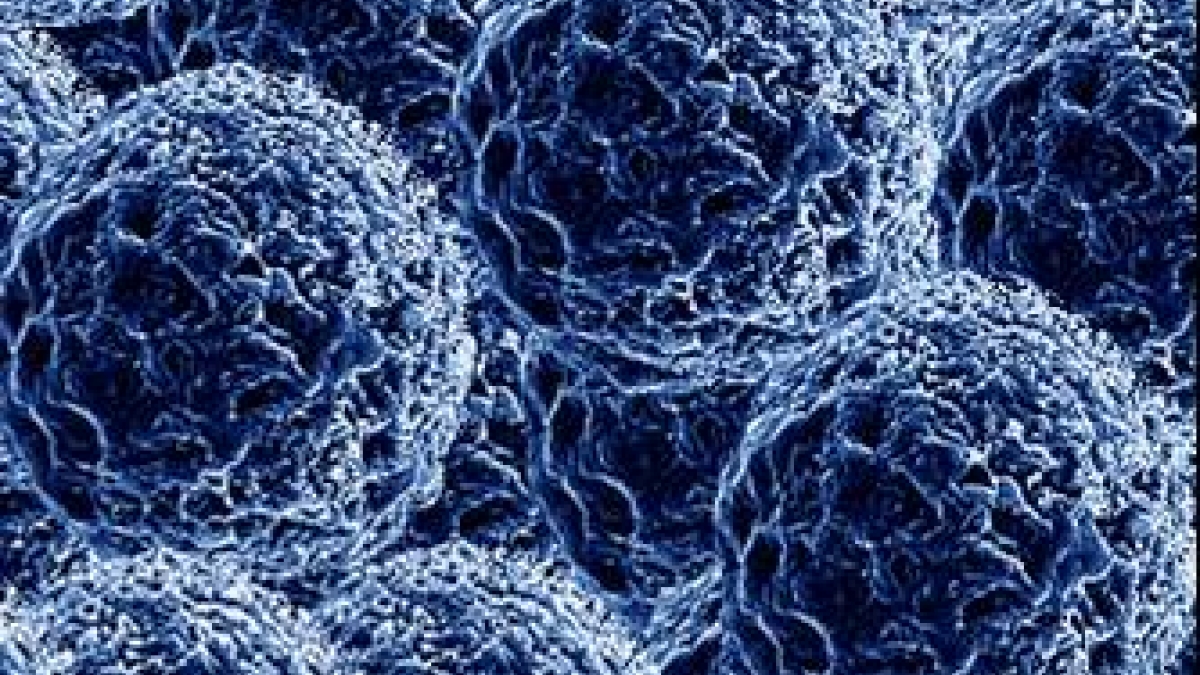New imaging technique homes in on electrocatalysis of nanoparticles

By modifying the rate at which chemical reactions take place, nanoparticle catalysts fulfill myriad roles in industry, the biomedical arena and everyday life. They may be used for the production of polymers and biofuels, for improving pollution and emission control devices, to enhance reactions essential for fuel cell technology and for the synthesis of new drugs. Finding new and more effective nanoparticle catalysts to perform these useful functions is therefore vital.
Now Nongjian (NJ) Tao, a researcher at Arizona State University’s Biodesign Institute, has found a clever way to measure catalytical reactions of single nanoparticles and multiple particles printed in arrays, which will help characterize and improve existing nanoparticle catalysts, and advance the search for new ones.
Most catalytic materials synthesized in labs contain particles with different sizes and shapes, each having different electrocatalytical activities, but the conventional methods measure the average properties of many nanoparticles, which smear out the properties of individual nanoparticles.
“The capability of measuring single nanoparticle catalytical reactions allows for determining the relationship between the efficiency of a catalytical reaction and the size, shape and composition of the nanoparticle,” Tao explained. “Such an imaging capability also makes it possible to image arrays of nanoparticle catalytical reactions, which may be used for fast screening of different nanoparticles,” he added.
In the current study, platinum nanoparticles acting as electrochemical catalysts are investigated by means of the new technique, known as plasmonic electrochemical imaging. The method combines the spatial resolution of optical detection with the high sensitivity and selectivity of electrochemical recognition.
Results of the study appear in this week’s advanced online edition of the journal Nature Nanotechnology.
Scanning electrochemical microscopy (SECM) has been used to image electrochemical reactions by mechanically scanning a sample surface using a microelectrode. In this process however, imaging speed is limited and the presence of the microelectrode itself may impinge on the sample and alter results.
The new method relies instead on imaging electrochemical reactions optically based on the phenomenon of surface plasmon resonance. Surface plasmons are oscillations of free electrons in a metal electrode, and can be created and detected with light. Every electrochemical reaction is accompanied by the exchange of electrons between reactants and electrodes, and the conventional electrochemical methods, including SECM, detect the electrons.
“Our approach is to measure electrochemical reactions without directly detecting the electrons,” Tao said. “The trick is to detect the conversion of the reactant into reaction products associated with the exchange of electrons.” Such conversion in the vicinity of the electrode affects the plasmon, causing changes in light reflectivity, which the technique converts to an optical image.
Using plasmonic electrochemical current imaging, Tao’s group examined the electrocatalytic activity of platinum nanoparticles printed in a microarray on a gold thin-film electrode, demonstrating for the first time the feasibility of high-throughput screening of the catalytic activities of nanoparticles.
Additionally, the new study shows that the same method can be used to investigate individual nanoparticles. As an electrical potential is applied to the electrode and cycled through a range of values, nanoparticles clearly appear as spots on the array. The effect can be seen in accompanying videos, where nanoparticle spots ‘develop’ over time as the potential changes, much like a polaroid picture gradually appears.
Microarrays featuring different surface densities of nanoparticles were also produced for the study. Results showed that electrocatalytic current at a given potential increases proportionally with nanoparticle density. Further, when individual nanoparticles were characterized using SPR microscopy, atomic force microscopy (AFM) and transmission electron microscopy (TEM), good agreement was shown between the results, further validating the new technique.
Tao notes that in principle, plasmonic electrochemical imaging – a rapid and non-invasive technique offering the combined benefits of optical and electrochemical detection – may be applied to other phenomena for which conventional electrochemical detection methods are currently used.
In addition to his appointment as the Director of the Center for Bioelectronics and Biosensors at the Biodesign Institute, Tao is a professor in the School of Electrical, Computer and Energy Engineering, one of ASU’s Ira A. Fulton Schools of Engineering.